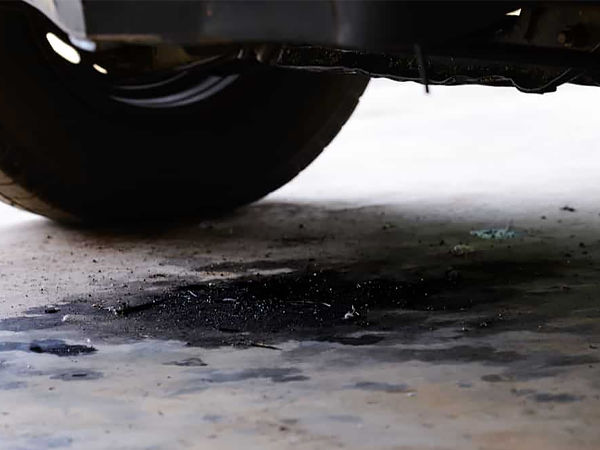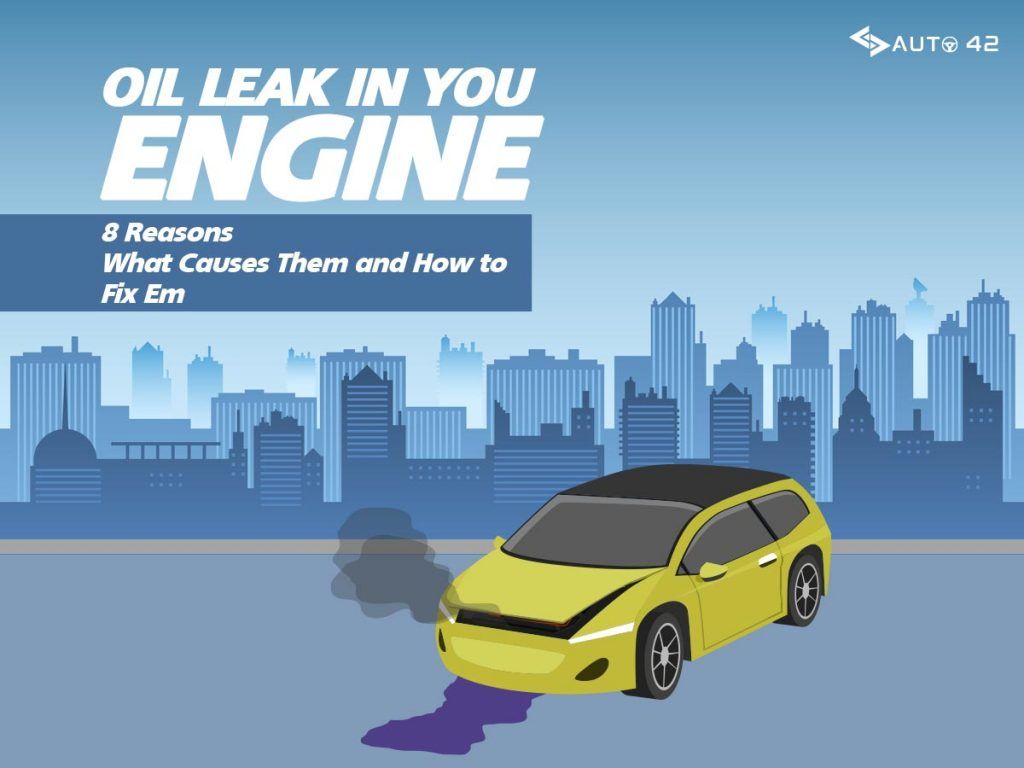On a typical day, while driving to work, you notice a pool of oil beneath your car. Finding oil leak under your automobile is unsettling, no matter how small. Furthermore, unsightly leaks might ruin the appearance of your driveway.
Don’t disregard an oil leaks. A leaking engine from the top or bottom is a major problem. So, what should a responsible automobile owner do? Of course, the leak must be repaired, and a competent technician will be able to determine the source of the leak. But, in the meanwhile, here are some theories as to why your automobile could be leaking oil – and where it might be leaking oil from.
What is causing my engine to leak oil?
One of the most prevalent sources of oil leakage in an automobile is the oil pan gasket. However, the oil pan gasket may not be leaking oil, and it might be a leak in the timing belt cover or a leak in the camshaft seal. A variety of factors might cause an oil leak. However, these are the top eight reasons your automobile may be leaking oil.

Common causes of oil leak in automobiles
We’ll go through the most prevalent reasons your automobile may be leaking oil shortly. But first, a word of caution: There are several different types of vehicles on the road, all of which might develop leaks from various sources. As a result, this list is not exhaustive; rather, it focuses on some of the most common leaks, such as an oil leak from the timing cover and an oil leak at the front of the engine.
Engine oil leaks are often caused by a faulty seal or gasket, which can also be caused by damaged parts such as a fractured oil pan. If your automobile is leaking engine oil, the cause might be one or more of the following:
1. Gasket for the oil pan
The oil pan gasket is one of the most likely places for an oil leak. As the name says, the oil pan gasket seals the oil pan to the engine block. If the gasket is leaking oil, it is possible that it has to be changed.
2. Gasket for the valve cover
If your engine is leaking oil from the top, it might be due to a problem with the valve cover gasket.
A valve cover protects the components inside the cylinder head and is located on top of your engine. As you might expect, a gasket acts as a seal between the cylinder head and the valve cover. It’s important to note that inline engines only have one valve cover, whereas V-style engines have two.
The valve cover gasket breaks down over time and becomes less efficient at sealing off the oil. If there is oil in the region around the valve cover gasket, it is time to replace the item.
3. Crankshaft seals, both front and back
The crankshaft is a component of the internal engine that protrudes slightly from both ends of the engine. It can be a mounting point for the external harmonic balancer, flywheel, or flexplate by protruding slightly. Seals at both ends of the crankshaft prevent oil from seeping from the engine, and these are sometimes referred to as the front and rear primary seals.
If a minor crankshaft seal leaks, the oil may begin to build on the engine’s underbelly. However, if the leak is substantial, there may be a visible oil leak in front of the engine.
4. Oil drain plug and filter
The oil drain plug is removed and reinstalled every time you change your oil. At the same time, the oil filter is changed. Because these components are routinely tampered with, they are typically the source of leaks.
Also Read, Potholes of India: How these affect your Car?
5. Timing cover seal or gasket
While some engines employ a timing belt, most current applications use a timing chain. The timing chain is lubricated with oil, and a timing cover protects it. The timing cover seal or gasket keeps oil where it belongs: within the timing cover.
Timing cover gaskets, like many other automotive parts, deteriorate with time. As the gasket deteriorates, the oil may leak from the timing cover. Sometimes, the timing cover itself is worn, not the gasket.
A timing cover leak is usually the cause of oil seeping from the middle of the engine at the front. However, a professional must analyze your car to determine whether the timing cover or gasket has to be changed to remedy the oil leak.
6. Seals for camshafts
Camshaft seal leaks are prevalent on engines that employ a timing belt to keep the camshaft and crankshaft in rhythm. The camshafts of your automobile, like the crankshaft, are located on the engine’s interior. Overhead camshaft engines have two (or more) camshafts that protrude slightly to provide a mounting point for the timing gears or sprockets. A camshaft seal is a mere piece of rubber that wraps around the end of camshaft and keeps oil from leaking out of the engine.
If it’s camshaft leak, you should look oil on the engine’s rear under the valve cover. A big camshaft leak might cause smoke to billow from the engine compartment, and you may even smell smoke without seeing it at times. A mechanic can evaluate your car to see whether an oil leak is caused by a damaged or faulty camshaft seal.
7. Gasket for the cylinder head
Head gaskets are more frequently recognized for generating internal leaks, leading to problems including coolant consumption and coolant-oil intermix. However, head gaskets can leak both engine oil and coolant outside. Flat engines, sometimes known as boxer engines, are especially vulnerable to this issue.
8. Gasket or seal for the oil filter adapter housing
The oil filter in your automobile is attached to an adapter housing. What’s more, guess what? Behind that housing is generally a gasket or seal that can leak. Leaks from the oil filter housing cover or seal may also occur if your vehicle uses a cartridge-style oil filter.
Is it safe to drive a car with an oil leak?
If the engine is leaking oil from the top or bottom, you should not drive the vehicle. Why? Oil is a flammable liquid that, under certain conditions, may ignite. If the oil catches fire, it can damage the vehicle.
This isn’t the only reason you shouldn’t drive an oil-leaking automobile. An oil leak can also cause seals and rubber hoses to wear out prematurely, necessitating their replacement sooner.
Furthermore, a leak might cause you to lose all of your oil. Even if it is a minor leak, it can rapidly become a major leak while you are driving. Operating a car that is short on oil might cause catastrophic engine harm.
If your car is leaking oil, you should cease driving it right away for these reasons. As soon as possible, contact a skilled technician to remedy the oil leak and prevent future damage.
How to Prevent Oil Leak
Proper maintenance and routine oil changes will help you avoid future damage to critical engine components, preventing damage and leaks before they occur. An excellent trick to remain on top of this is to use a regular maintenance checklist. Even a vehicle storage checklist might help you focus on important aspects of auto maintenance.
If you develop a leak in any places above, you may self-service your car using components obtained from a local automotive store. If time, experience, or a lack of tools limit what you can perform at home, you can call a technician.
If the leak is minor, use a stop leak additive like No Leak. These leak stoppers are safe to use on your car and effective for most leaks. Seals on your car can shrink, dry up, and become brittle as they age. A stop leak chemical softens and conditions worn gaskets, forcing them to expand once again and prevent future leakage. Keep in mind that some additives may not be effective for more serious leaks.
